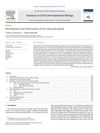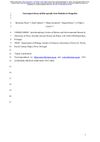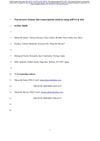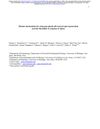TLDR Pangolins have lost some skin-related genes, but kept others, leading to their unique scales and skin features.
This study investigates the genetic basis for skin adaptations in pangolins, which are known for their unique keratin-derived scales. By analyzing four pangolin genomes, the researchers found that genes related to sebum production, such as Awat1/2 and Dgat2l6, show patterns of inactivation, suggesting a decay of the pilosebaceous unit in these animals. However, the gene Elovl3, important for skin barrier function, remains intact and active. Additionally, genes involved in skin pathogen defense and keratinocyte layer integrity also exhibit inactivating mutations, indicating a complex evolutionary history of gene retention and loss in mammalian skin development. Contrary to what might be expected from the absence of sweat glands in pangolins, the gene Abcc11 is not inactivated, which differs from the pattern seen in cetaceans. This research highlights the intricate genetic changes that underlie the evolution of specialized skin features in mammals.
 16 citations
,
November 2022 in “eLife”
16 citations
,
November 2022 in “eLife” Both gene and non-gene areas of DNA evolved to make some mammals hairless.
35 citations
,
April 2021 in “Current Biology”  10 citations
,
April 2017 in “PLoS ONE”
10 citations
,
April 2017 in “PLoS ONE” White rhinoceroses have a unique skin structure with thick epidermis and no hair or oil glands.
42 citations
,
January 2014 in “BMC Genomics” Cetaceans lost hair genes to adapt to water.
28 citations
,
September 2013 in “European Journal of Histochemistry” Keratins in Malayan pangolins vary by region, suggesting scales evolved from the tail towards the head.
 107 citations
,
August 2012 in “Seminars in Cell & Developmental Biology”
107 citations
,
August 2012 in “Seminars in Cell & Developmental Biology” The document concludes that understanding the sebaceous gland's development and function is key to addressing related skin diseases and aging effects.
 1 citations
,
December 2022 in “bioRxiv (Cold Spring Harbor Laboratory)”
1 citations
,
December 2022 in “bioRxiv (Cold Spring Harbor Laboratory)” Pangolins have lost some skin-related genes, but kept others, showing complex skin evolution.
 10 citations
,
March 2022 in “Communications biology”
10 citations
,
March 2022 in “Communications biology” A new non-invasive method can analyze skin mRNA to understand skin diseases better.
 2 citations
,
April 2021 in “bioRxiv (Cold Spring Harbor Laboratory)”
2 citations
,
April 2021 in “bioRxiv (Cold Spring Harbor Laboratory)” The conclusion is that analyzing RNA from skin oils is a promising way to understand skin diseases.
9 citations
,
August 2021 in “International journal of molecular sciences” PPARγ is essential for maintaining healthy skin, controlling inflammation, and ensuring proper skin barrier function.
 2 citations
,
May 2023 in “bioRxiv (Cold Spring Harbor Laboratory)”
2 citations
,
May 2023 in “bioRxiv (Cold Spring Harbor Laboratory)” Sebaceous glands can heal and regenerate after injury using their own stem cells and help from hair follicle cells.







